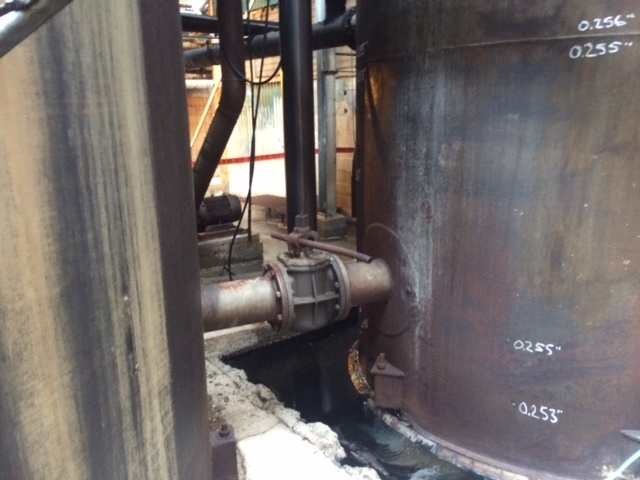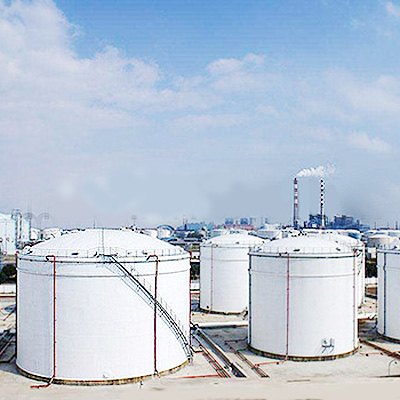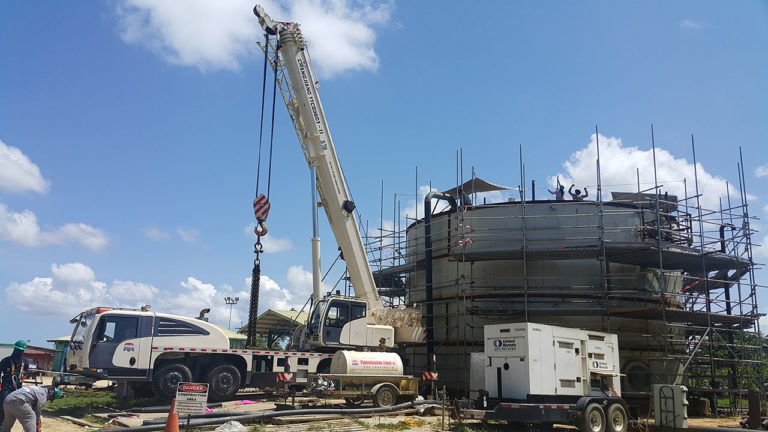A Detailed Take A Look At the Setup Refine of Welding Evaluation Techniques
Welding assessment is an important process that ensures architectural stability and security. The installation of assessment techniques includes numerous organized steps, each indispensable to achieving trusted results. From planning and device option to conducting non-destructive and aesthetic examinations, each phase demands mindful attention. Comprehending these procedures can considerably boost quality assurance in welding jobs. What difficulties occur in implementing these techniques, and exactly how can they be properly addressed?
Recognizing the Value of Welding Examination
Welding examination is an important part of ensuring structural stability and safety in building and production procedures. This method includes reviewing bonded joints for issues, ensuring that they meet certain criteria and regulations. By systematically gauging weld quality, examiners can recognize concerns such as splits, gaps, and insufficient combination, which can compromise the stamina and longevity of structures.
The importance of welding assessment expands past prompt safety concerns; it helps protect against pricey failings and prospective dangers in the long-term. Effective inspection strategies foster compliance with sector requirements, thus improving the general integrity of welded parts. In enhancement, a durable examination process contributes to keeping the track record of manufacturers and builders, as it ensures customers of the high quality of their projects. Eventually, understanding the value of welding assessment is essential for advertising risk-free construction practices and ensuring the long life of important framework and products.
Selecting the Right Devices for Assessment
When picking the suitable devices for inspection, it is necessary to contemplate the particular needs of the welding process and the materials entailed. Numerous inspection methods, such as aesthetic, ultrasonic, and radiographic screening, necessitate distinct tools customized to their distinct demands. For visual evaluations, devices like amplifying calipers and glasses are critical for assessing weld high quality. Ultrasonic testing needs customized tools capable of transmitting and obtaining acoustic waves to discover interior problems. Radiographic screening, on the various other hand, utilizes X-ray or gamma-ray sources alongside delicate film or electronic detectors to expose incongruities.
Additionally, individual safety equipment (PPE) is vital to assure the safety and security of assessors throughout assessments. Choosing the right tools not only enhances the accuracy of inspections yet likewise adds to the general integrity and safety of the welding project. Subsequently, a complete understanding of readily available devices and their applications is imperative for reliable welding evaluation.
Preparing for the Inspection Refine
Before initiating the examination procedure, it is important to establish a thorough strategy that describes the extent and goals of the assessment. This strategy must include specific standards that define what constitutes appropriate quality in the welding job being examined. Determining the relevant codes and requirements is vital, as they will direct the examination requirements and methodologies.
Furthermore, personnel associated with the assessment must be appropriately trained and licensed in welding assessment techniques to ensure integrity and accuracy. A list can be helpful in organizing the numerous elements of the inspection, ranging from equipment readiness to environmental problems that might impact the assessment.

Logistical factors to consider such as scheduling, readily available resources, and communication between group participants should be addressed. By preparing systematically, assessors can boost the performance of the analysis and make certain that all essential elements are appropriately thought about before proceeding with the evaluation itself.
Carrying Out Aesthetic Assessments

Performing visual evaluations is a crucial action in the welding evaluation process, needing mindful preparation to assure effective analysis. Examiners must be familiar with vital problem indications that can indicate potential problems in weld top quality. By concentrating on these facets, one can enhance the general integrity of the assessment outcomes.
Getting Ready For Visual Inspection
Aesthetic inspection works as an important first step in the welding examination process, ensuring that any kind of prospective issues are identified early (API 650 Welding Inspection). Appropriate prep work is important for reliable visual examination. Inspectors ought to begin by reviewing pertinent documents, consisting of welding treatments and requirements, to comprehend the task requirements. They should collect required devices, such as magnifying glasses, flashlights, and proper individual safety equipment (PPE) A detailed evaluation of the assessment location is critical; assessors need to verify it is complimentary and clean of blockages. In addition, it is essential to develop ideal lighting problems to boost presence of welds. By taking these primary actions, assessors can develop an environment for determining inconsistencies and guaranteeing the integrity of the welded frameworks
Trick Issue Indicators
A thorough understanding of vital flaw indications is crucial throughout aesthetic assessments to ensure the top quality and safety and security of bonded joints. Examiners must focus on details indicators such as splits, porosity, damages, and incomplete fusion. Splits may look like sharp lines official statement and can endanger architectural integrity. Porosity manifests as tiny openings that can damage weld toughness. Undercuts, which are grooves along the weld edge, can lead to stress focus. Insufficient blend suggests that the weld metal did not effectively bond with the base product, resulting in a weak joint. By methodically determining these defects, assessors can establish conformity with market standards and boost the overall integrity of welded structures, ultimately adding to much safer functional conditions.
Implementing Non-Destructive Evaluating Techniques

Many non-destructive screening (NDT) methods are indispensable to assuring the stability of bonded structures without jeopardizing their functionality. These techniques enable assessors to assess weld top quality and spot issues without causing damages to the products being checked. Usual NDT techniques include ultrasonic screening, radiographic testing, magnetic bit testing, and dye penetrant screening. Each technique offers a specific function, addressing different sorts of defects such as cracks, porosity, or incomplete blend.
Implementing NDT techniques requires an my link organized approach, beginning with choosing the ideal technique based upon the products and the nature of the weld. Educating personnel in these methods is vital for exact outcomes. Additionally, establishing clear treatments and standards assurances uniformity throughout the examination procedure. By incorporating NDT right into the welding assessment operations, companies can boost the integrity of their items while minimizing potential threats associated with structural failures. This proactive approach eventually adds to keeping security and high quality requirements in welded building and constructions.
Analyzing and documenting Inspection Outcomes
Efficient paperwork and analysis of inspection outcomes are essential parts of the welding examination procedure. Precise records of inspection searchings for serve as a reference for quality guarantee and compliance with industry criteria. API 650 Welding Inspection. Examiners should make use of electronic platforms or structured kinds to log details such as the sort of weld, inspection methods used, and any type of discrepancies determined during the examination
Complete analysis is essential once information is accumulated. This entails comparing outcomes against developed criteria to identify fads or persisting issues. Analytical devices may be employed to measure defects and examine their effect on general weld top quality.
Effective interaction of findings to pertinent stakeholders is vital. Reports and recaps should be succinct and clear, highlighting vital insights and suggestions for corrective actions. By systematically recording and examining evaluation results, companies can cultivate continuous enhancement in welding methods and enhance item honesty.
Frequently Asked Questions
What Certifications Are Required to Come To Be a Welding Examiner?
To come to be a welding assessor, one generally requires learn the facts here now relevant qualifications such as AWS CWI, together with experience in welding methods, knowledge of welding codes, and proficiency in assessment methods to assure top quality and safety standards.
How Frequently Should Welding Inspections Be Performed?
Welding examinations should be performed regularly, generally after each weld is completed, and periodically during projects. Factors such as project intricacy, sector requirements, and governing requirements can influence the regularity of these evaluations.
What Is the Cost of Welding Evaluation Services?
The price of welding examination solutions varies considerably based on variables such as task intricacy, place, and size. Generally, prices vary from $100 to $150 per hour, with extra fees for specialized screening and accreditations.
Are There Certifications for Welding Inspectors?
Yes, there are numerous accreditations for welding inspectors, consisting of those used by the American Welding Society (AWS) and the International Institute of Welding (IIW) These certifications assure examiners have the needed abilities and expertise for efficient analyses.

Just how Do I Choose an Assessment Company?
To choose an assessment company, one must review qualifications, experience, market online reputation, and consumer evaluations. Furthermore, comparing service offerings and prices can aid guarantee the chosen service provider satisfies details project needs successfully.
In addition, personnel involved in the assessment has to be properly educated and licensed in welding inspection techniques to ensure integrity and precision. Performing aesthetic inspections is a vital action in the welding examination procedure, calling for mindful prep work to assure reliable analysis. Aesthetic examination offers as a critical very first action in the welding assessment process, ensuring that any type of possible issues are recognized early. Efficient paperwork and analysis of evaluation results are important components of the welding evaluation procedure. Welding evaluations should be conducted frequently, usually after each weld is completed, and periodically throughout projects.